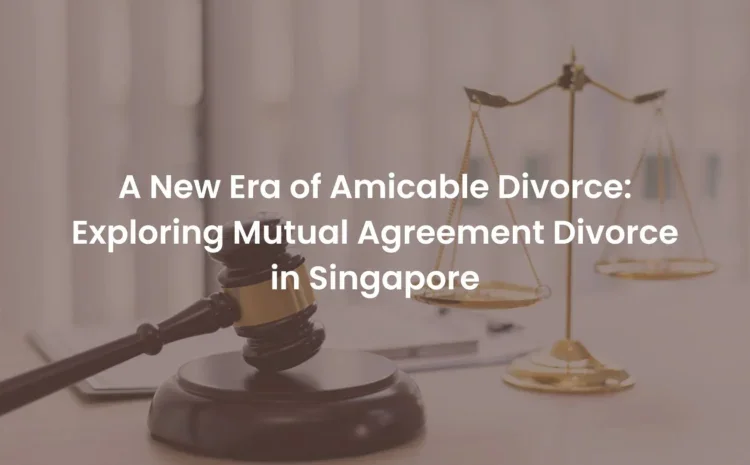A New Era of Amicable Divorce: Exploring Mutual Agreement Divorce in Singapore
Divorce is often associated with acrimony, lengthy legal battles, and emotional turmoil. However, a recent development in Singaporean divorce laws has paved the way for a more amicable and streamlined approach to ending marriages: Mutual Agreement Divorce (MAD). Let’s delve into this innovative legal framework and its implications for couples seeking a peaceful dissolution of their marriage.
Introducing Mutual Agreement Divorce (MAD)
Mutual Agreement Divorce, introduced in Singapore in 2021, represents a paradigm shift in the way divorces are approached and resolved. Under MAD, couples who mutually agree to divorce can opt for a simplified and expedited process, provided they meet certain eligibility criteria.
Key Features of Mutual Agreement Divorce
Consent-Based:
MAD requires the mutual consent of both spouses to proceed with the divorce. This consent must be voluntary and not obtained under duress or coercion.
No-Fault Ground:
Unlike traditional divorce proceedings, MAD does not require couples to assign blame or prove fault for the breakdown of the marriage. Instead, it recognizes the irretrievable breakdown of the relationship as the sole ground for divorce.
Simplified Procedure:
One of the hallmarks of MAD is its streamlined and cost-effective procedure. Couples can bypass lengthy court hearings and paperwork, opting instead for a simpler process facilitated by a qualified mediator or lawyer.
Ancillary Matters:
While MAD focuses primarily on the divorce itself, couples are still required to resolve ancillary matters such as division of matrimonial assets, custody of children, and spousal maintenance. However, these issues can often be resolved amicably through mediation or negotiation, reducing the need for contentious litigation.
Eligibility for Mutual Agreement Divorce
To qualify for MAD, couples must meet the following eligibility criteria:
Both spouses must agree to the divorce.
The marriage must have irretrievably broken down.
There must be mutual consent on ancillary matters, or these matters have been resolved through mediation or negotiation.
Both parties must be represented by lawyers to ensure that their rights and interests are adequately protected.
Benefits of Mutual Agreement Divorce
Faster Resolution:
MAD offers a more expeditious alternative to traditional divorce proceedings, allowing couples to finalize their divorce within a shorter timeframe.
Cost-Effective:
By avoiding prolonged court battles and legal fees associated with contentious divorces, MAD can result in significant cost savings for both parties.
Preserves Relationships:
By promoting cooperation and mutual consent, MAD encourages couples to maintain a civil relationship post-divorce, which can be particularly beneficial for co-parenting arrangements and family dynamics.
Conclusion: Embracing a New Approach to Divorce
Mutual Agreement Divorce represents a progressive step forward in Singapore’s legal landscape, offering couples a viable alternative to traditional adversarial divorce proceedings. By prioritizing cooperation, mutual consent, and amicable resolution, MAD seeks to mitigate the emotional and financial toll of divorce, allowing couples to transition to the next chapter of their lives with greater dignity and respect.
As Singapore continues to evolve its approach to family law, Mutual Agreement Divorce stands as a testament to the country’s commitment to fostering harmonious and constructive solutions to marital dissolution. Whether couples choose MAD or opt for traditional divorce proceedings, the overarching goal remains the same: to navigate the complexities of divorce with compassion, integrity, and a focus on preserving the well-being of all parties involved.

